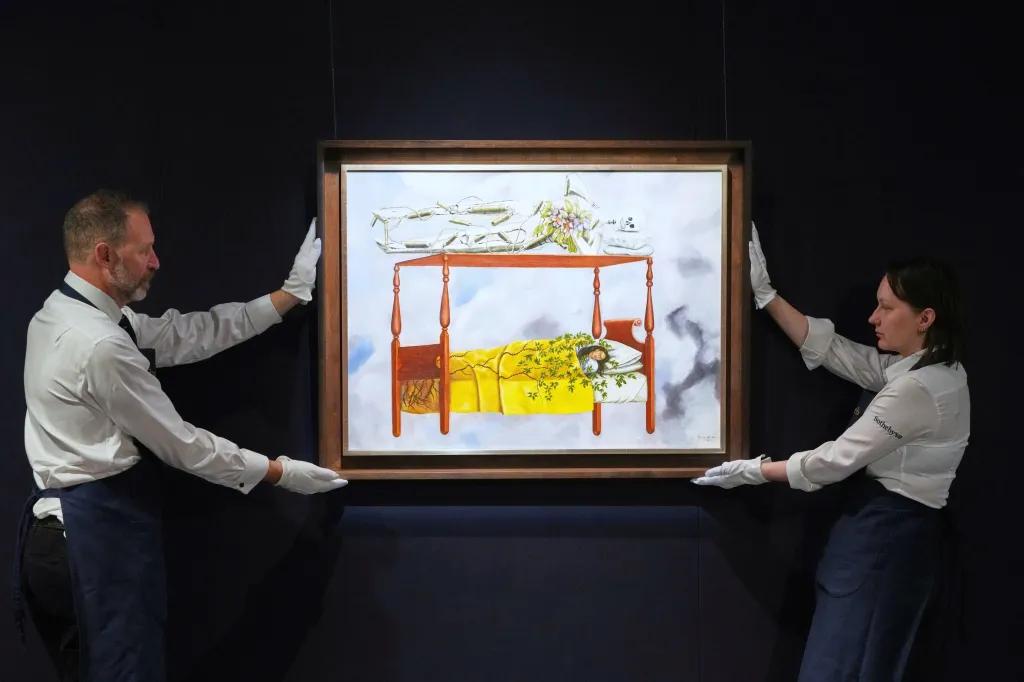Filling their walls
For one collector, I recently spoke with, it all started when they bought their first home. They couldn’t bear looking at empty walls and they wanted to add colour and life into their home. The obvious choice: buy some art. What started as an aesthetic pursuit quickly became a passion. It led to learning more about the art they were acquiring and enjoying choosing works to then find spaces for them within their home. A great painting in a home is not just décor; it’s dialogue.

Bringing culture and education into a home
There is a reason why art collecting is often a generational hobby. Incorporating art into a home is not just about beautifying a space; it’s about cultivating a cultural space. A home offers opportunities for learning and reflection. Children and visitors benefit from constant exposure to art, whether through iconic historical pieces or contemporary works that provoke thought. Art is a bridge to history, culture, and creativity, encouraging the next generation to ask questions and think critically.

A hobby
Let’s not ignore the fact that art collecting can be a hobby. High-end art is a significant financial commitment, and acquiring pieces for a collection often requires substantial resources, yet there are a number of fantastic art collections that have been built on tiny budgets. The process of researching, acquiring, and maintaining a collection becomes a deeply satisfying pursuit. Just as some people spend their leisure time on golf, wine, or luxury cars, art lovers do the same.

Investment
All art carries investment value, and that shouldn’t be overlooked. Like purchasing a home, the primary motivation may not be resale, but few would choose an asset they expect to depreciate. Historically, art has shown resilience in the face of market volatility, particularly in the case of established artists or carefully curated collections. For many collectors, this makes art a compelling asset class - one that not only holds financial potential but also offers the unique benefit of being enjoyed in daily life. Unlike stocks or bonds, art can be lived with, appreciated, and shared, all while potentially increasing in value over time.

Emotional investment
While financial returns are often discussed in the context of art, emotional returns are just as significant. Collectors frequently speak about the joy and inspiration they derive from their collections. Whether it’s the calming effect of a serene landscape or the intellectual stimulation offered by a complex abstract piece, the emotional rewards are undeniable. These artworks become anchors in their lives and can provide comfort. Often collectors who have inherited artworks from loved ones have spoken about the warmth and nostalgia it brings when they see the work in their own homes.

Leaving a legacy
Art collecting is a way of leaving a lasting legacy. The art a collector gathers can offer a window into their passions, worldview, and the life they led. It becomes a tangible way to remember someone. Art collecting is an intimate reflection of personal taste, values, and identity. For many collectors, the works they choose to live with become a direct extension of who they are. A carefully curated collection speaks volumes about one’s aesthetic sensibility, cultural interests, and even philosophical or political views. By preserving artworks, lending them to museums, and ensuring their continued visibility and care, collectors act as custodians of our shared artistic heritage. A thoughtfully curated collection not only speaks to who a person was, it shows their commitment to safeguarding art for future generations.

You might be wondering what the collector did reply. It was possibly my favourite answer I’ve heard. She said, “Each piece I collect tells a story, sometimes about the artist, sometimes about a place or moment in time, and sometimes, about me. Sure, I could invest in stocks or real estate. But those don’t greet me in the morning, make my children ask questions, or my guests stop and think.”


